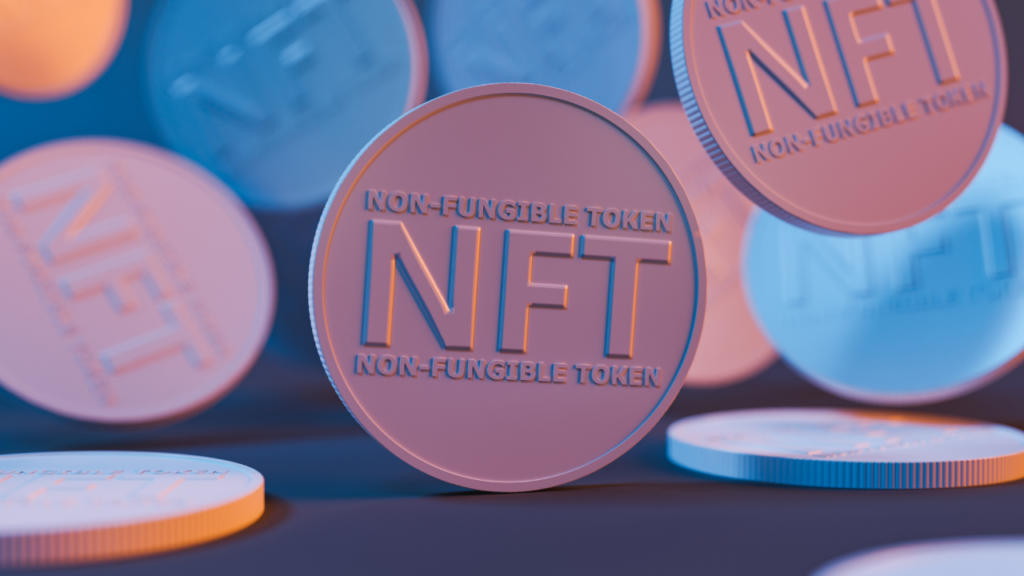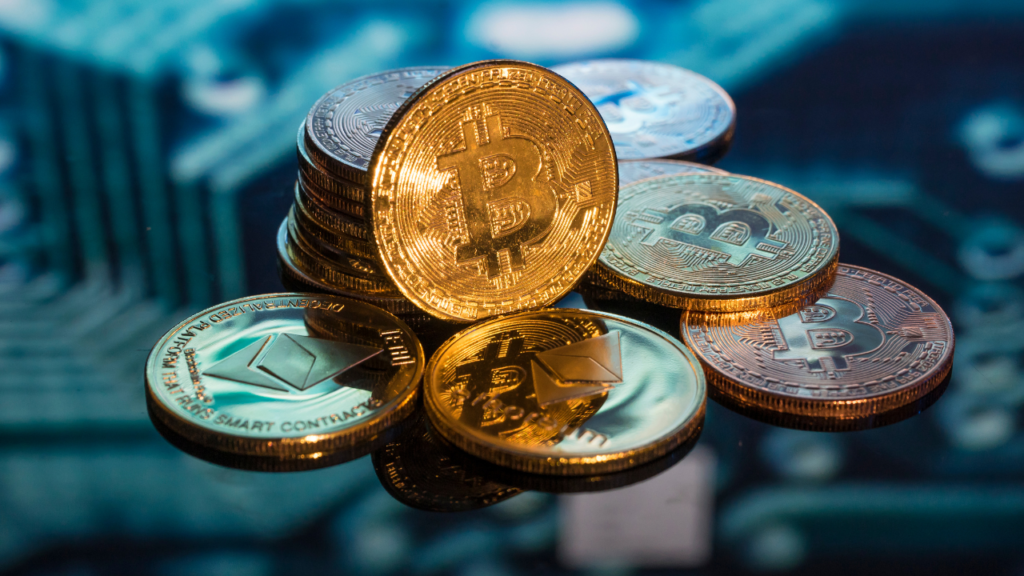Blockchain technology has the potential to change a lot about the physical world despite being a digital invention. The automation and transfer of representations of value without intermediaries offer the chance for trustless transactions without physical intermediaries. Most of these transactions will most likely happen with tokens.
In a nutshell, blockchain tokens will provide a digital representation of complete or shared ownership of an entity having a specific value.
However, what are crypto tokens? How do you tokenize assets or functions onto the blockchain? Understanding how that process works will offer far more insight into blockchain ecosystems than what might be obvious.
What Is Tokenization in Crypto and Web3?
Tokenization is the term given to the process of converting assets into digital tokens on a blockchain. These digital tokens can represent a variety of different physical and digital assets.
Additionally, many of the popular cryptocurrencies people invest in use tokens minted on a blockchain.
With the multiple types of tokens and ways that people can use them, there’s plenty to talk about how these tokens come about and what they can represent in Web3.
How Tokens Are Created
For tokens to get minted on the blockchain, the blockchain itself requires smart contract functionality. Smart contracts are self-executing bits of code programmed onto the blockchain. These bits of code follow along with the rules set by the programmer and get distributed across the decentralized network that is the blockchain.
Smart contracts that create tokens rely on trusted transactions to release their held tokens. Users commit an asset they want to tokenize as well as some amount of cryptocurrency to fuel the transaction. If the blockchain confirms the transaction, the smart contract takes the committed cryptocurrency and asset and releases the token to the user.
As a digital asset, tokens come with several benefits. Thanks to the distributed nature of most popular blockchains, there’s a greater supply of tokens than many of the common physical and paper assets that investors preferred over the last century. Anyone can go onto the blockchain and purchase these tokens from others or mint their own if they have assets to commit.
Additionally, creating tokens allows users to participate at a scale they prefer. While many stock exchange apps are starting to offer fractional shares, cryptocurrency tokens have always been available as fractions that go down to minimal values.
Assets That Can Be Tokenized
Several types of assets can have tokens made out of them. Let’s take a look at what those asset types are and why tokenization can benefit them.
Intangibles
Intangible assets refer to assets without a physical form or representation native to them. This asset category tends to refer to ideas such as legal protections like copyright ownership and patents.
The tokenization of these assets allows users to make it clear who owns these otherwise nebulous assets. There could be a future for these tokens where patent or copyright owners provide a token relating to the original owner as proof of permission to use the intellectual property under pre-coded parameters.
Fungible Assets
Fungible assets refer to assets that have a replacement available to them. Some of the common examples of this include physical commodities like wheat or gold. Regardless of which specific segment of the material you refer to, a pound of wheat or gold will always act and operate like any other pound of wheat or gold.
Tokens created for these assets allow traders and market makers to subdivide these assets further than might usually be possible. This accessibility allows for greater trade liquidity as more investors buy into the smaller shares.
Non-Fungible Assets
Non-fungible assets refer to assets that can be replaced in kind or subdivided further in physical space. Artistic works like pictures and digital video assets are prime examples of these assets as you cannot break a painting or 3D render it into smaller pieces.

The tokens created for these assets are non-fungible tokens (NFTs), which showed great popularity in blockchain investing and news. These tokens allow artists to more readily sell their art or collections to enthusiasts and investors thanks to breaking these assets down into smaller pieces than would be possible in physical space.
Challenges in Tokenization
While there are benefits to tokenizing assets, there are certainly downsides.
The clearest example is the newness of tokenization. As this technology continues to develop, there is still the question of regulatory compliance as this asset draws similarities with other asset classes but does not line up perfectly.
For example, regulators can treat cryptocurrencies as either assets or commodities. Each moniker comes with different rules and laws regarding trading restrictions and transparency requirements for investors and taxation. Because some cryptocurrencies are tokens by creation, laws affecting tokenization affect these cryptos, too.
There are also concerns about how tokenization affects concepts like ownership and responsibility of a physical asset. If a physical asset like a building becomes represented by thousands of tokens on the blockchain, who controls the building’s maintenance? Who bears legal responsibility for the building staying up to building codes and similar local laws?
Questions like these tend to be why current crypto investors tend to welcome regulatory guidance. Rather than blitzing ahead, many cryptocurrency-related businesses seek clarity from regulators to better understand how they can operate.
Crypto Tokens vs. Coins
Although tokens and crypto coins have different structures that create them, many folks use the two terms interchangeably. Let’s clear up that misconception:
Cryptocurrency Coins
A cryptocurrency coin refers to the base unit of value that operates on a blockchain. Many big and popular blockchains, like Bitcoin and Ethereum, have their blockchain named after their base units, which are called coins.
The most significant function of these coins is to act as the basic unit of value for transactions on the blockchain. These coins also operate as the fuel for transactions on the blockchain, including for trades between tokens on the blockchain.
In other words, a cryptocurrency is the liquidity foundation for the blockchain ecosystem.

Blockchain Tokens
Blockchain tokens represent smaller portions of the digital ecosystem the blockchain supports. Most tokens refer back to a specific asset for service on the blockchain, meaning a token will never get compared in scope or utility to the base coin of the blockchain.
Still, this means tokens have a specific use on the blockchain, making them relevant for that application or service. While having the base coin is needed for transactions, the token represents the work or ownership the user possesses.
Different Types of Tokens
With how many types of tokens can exist on the blockchain, it is easy to lump them together. However, tokens can vary in their function, meaning you should be aware of these types of tokens:
Governance Tokens
The proliferation of decentralized platforms means that ways of governing these platforms had to be created. Rather than allowing the platform’s creators to control everything, governance protocols and decentralized autonomous organizations (DAOs) have cropped up as governing bodies for platforms like decentralized exchanges.
Owners of governance tokens can participate in proposals and voting sessions to help determine the changes that will happen on the platform and help determine the direction the platform will go.
These organizations allow platforms to stay decentralized. However, this decentralization also introduces some issues regarding reaction speed, especially in the face of problems like smart contract hacks. Many decentralized platforms have measures to counter this flaw, but it is not a solved problem for all platforms yet.
Platform Tokens
A platform token is a token used as part of that platform’s functionality. These platforms ask a user to convert their crypto into platform tokens which then see use in the platforms’ various functions.
While many platforms use their governance token as their platform token, it’s not always the same token. For example, MakerDAO uses the DAI token as its platform token. However, this token is not a governance token, instead acting as a stablecoin pegged to the United States dollar.
Platform tokens offer an easy way to bring users into your ecosystem and keep them there. Since the token’s function tends to be limited to just one platform, these platform tokens bring users into their ecosystem and offer perks to raise the value of their token.
Security Tokens
Security tokens are a somewhat new category of tokens. This category designation is an ongoing development and a response to regulatory concerns and decrees from financial regulatory groups like the United States Security and Exchange Commission (SEC).
These tokens refer back to a security, which is an investment of interest or debt. These tokens are freely transferable and represent physical or paper assets like shares of a company or partial ownership of a piece of real estate.
In general, these tokens peg their value to the underlying asset’s value. By pegging their value to the physical asset, these tokens operate like the asset for transactions and sales between users.
Transactional Tokens
Transactional tokens are crypto tokens used to handle financial transactions between two users. These tokens represent some amount of value, allowing two users to exchange goods or services for these tokens between one another. Basically, transactional tokens work like currency.
While almost any token can get used as a transactional token, there are plenty of examples of dedicated transactional tokens on the market. Stablecoins like USDC and DAI are clear examples.
These stablecoins peg the value of their token to the US dollar. By pegging themselves to a static value, users can readily use stablecoins to transact without fear of the price changing too much over time due to volatility.
Utility Tokens
A utility token operates much like a platform token. It allows a user to access the functionality of a platform through its use. However, utility tokens differ in that their functionality works across platforms.
Utility tokens do not have to represent the same type of access across platforms. A token might get used in one way on one platform while offering access to different functions on a different one. These functions depend on the platform’s design and the developers’ intent.
Practical Use Cases
Since we’ve just talked about hypotheticals so far, let’s cover some of the real-world examples out there about how tokens see practical use:
Tokenization of Physical Assets
As mentioned, with security tokens, users can trade physical assets on the blockchain by creating tokens that peg their value to the physical asset. This function allows users to buy, sell, and hold something that has the asset’s value without trading the physical item.
One of the clearest examples of this is gold-pegged stablecoins. Tokens like PAXG, offered by Paxos, tie the value of their token to gold. This token allows users to buy and sell using the value of gold but at the speed of the blockchain. For larger transactions, using this token can be the difference between moving pounds of gold or exchanging on the blockchain.
Easy Transfer of Ownership
Part of the crypto craze seen in recent years revolved around NFTs. These tokens represent a piece of art or digital media committed to the blockchain and sold to interested users.
While the immediate use case didn’t appeal to some investors, the ability to digitally transfer concepts like ownership or identity means that proof of these concepts becomes easier with tokens and smart contracts.
Many platforms use NFTs and similar token architecture to facilitate transactions between verified user accounts.
Summary
Blockchain tokenization allows users to create tokens representing a smaller function on the blockchain. The specific role depends on the developer’s designs and the type of smart contract deployed. However, many of these tokens relate to exchanges of value and participation in decentralized platforms and organizations.
Beyond these uses, tokenization might offer automation and efficiency boosts for physical and intangible assets not seen before. Time will determine if this technology takes off in that direction, though.
Regardless, tokenization offers a range of utilities not otherwise available to a blockchain. Understanding crypto tokens and how they work can give someone a better idea of how these developing ecosystems work.


